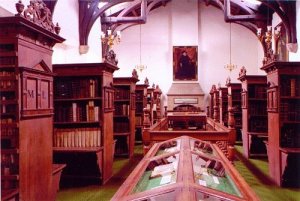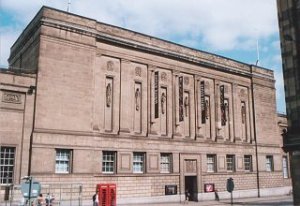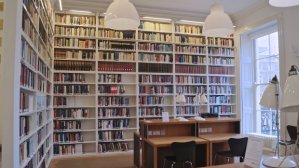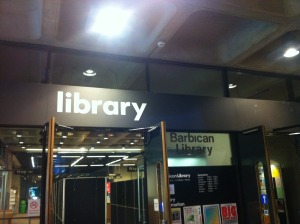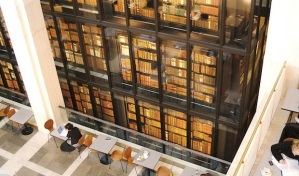This visit was also my own little adventure, well myself and two fellow librarians! We set off from London to Cardiff, Wales by train with no idea where we were going to where we would be staying once we got to Cardiff. I must say that this is not a particularly great way to travel if there are specific things that you want see as actual traveling and wandering around looking for the right bus can eat up quite a bit of time! So the only thing that three librarians would do when arriving in a strange city in a strange country is head to the nearest library to get some information. I must say that as the person who is normally behind the desk dishing out information to those who need it I felt a little strange being on the other side.
While the current Cardiff Library opened in 2009, the original was known as the Cardiff Free Library and opened in 1861. The library contains over 90,000 books with a little over 10,000 being written entirely in Welsh, the library also has a large collection of CDs and DVDs. The building is extremely modern inside and out and considerable effort went into making sure that the facility is as energy efficient as possible. The library boasts a total of six floors and is easily the largest and most modern library I have ever been to.
I was very impressed by the children’s floor of the library, the Edinburgh Central Library also had an amazing children’s area. I feel that in the States, at least the libraries that I have been to there is very little effort put into the design and overall thought put into children’s spaces and that demographic is crucial for libraries to attract. The Cardiff Central Library had a great overall layout which was really open and inviting there were bookshelves which were appropriately sized for young children as well as these very cool circular reading cubbies.
After my fellow travelers and I located a floor we felt was appropriate to ask some questions at, I proceeded to ask about some local places to stay and gather some other general information about the area that we were in, the librarians were very helpful and not only printed out some addresses and phone numbers of a few local places and gave us a few maps so that we could navigate around the city. So if you are ever in a new city, country, or just some unfamiliar territory head to the nearest library, they can help you find your way!
For more information about the Cardiff Central Library click here!




